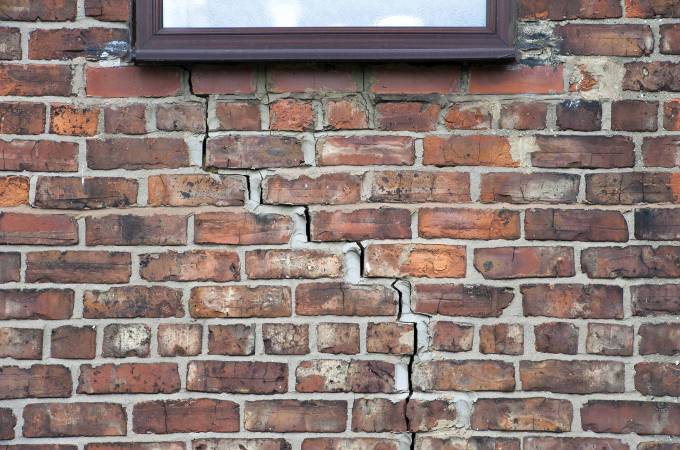
When the ground beneath your home starts giving way and your home begins to sink, it can be a huge problem. Known as subsidence, it compromises the whole structure and stability of your home and can be costly to repair.
What causes subsidence?
There are a number of reasons for subsidence, some of which are noticeable and some which are not. The most common ones include:
• Type of soil, particularly clay or soils with a high gravel content, which can dry out or get washed away, making the ground beneath your property unstable.
• Tree roots, like ash, elm, oak and willow. Tree roots will suck moisture out of the soil near your home, causing the earth to shrink and destabilise your foundations.
• Leaking drains (hidden or visible) can gradually wash away gravel or clay earth and saturate the ground so that your foundations become weak.
• Adverse weather can alter the ground underneath your home, with soil expanding in wet weather and contracting again when it’s dry, becoming loose around your foundations. The weather will also affect the groundwater beneath your home, and freezing, drought or flooding will risk the integrity of your property.
• If your home is above a historic mining area, the ground may be weaker and more prone to subsidence.
What are the symptoms of subsidence?
The most noticeable symptom of subsidence is cracks appearing in your walls. Hairline cracks are a normal part of building materials “breathing”, however, look out for ones that are 3mm wide (or more), wider at the top than the bottom, run diagonally across walls or are expanding. They may be on interior or exterior walls and are commonly found near doors and windows, or near an alteration, like an extension.
Other signs of subsidence include windows and doors beginning to jam (where the frames are warping), and wallpaper rippling.
What happens if my property is subsiding?
If you are concerned about your property subsiding, it’s essential that you have a HomeBuyer Survey or a Building Survey carried out by a qualified surveyor. They will be able to confirm the presence of subsidence and identify its most likely causes in most instances. A survey can also detail the extent of the structural movement and recommend the best remedial work to maintain your home’s safety.
In the best-case scenario, you can simply remove the tree or repair the drain that is causing the subsidence. However, a problem with the soil quality may mean that the property has to be underpinned with a new foundation to keep it safe.
Are you concerned about signs of subsidence in your home, or in a property you are thinking of buying? Contact our team at H&S Surveyors and we would be happy to discuss your concerns and arrange an inspection.